How to Make Vietnamese Salt-Roasted Frog
To make salt-roasted frog delicious, first you need to know how to properly prepare the frog meat to eliminate any fishy taste. Additionally, learn how to make the perfectly seasoned, fragrant roasted salt powder that enhances the flavor and appeal of the frog dish.
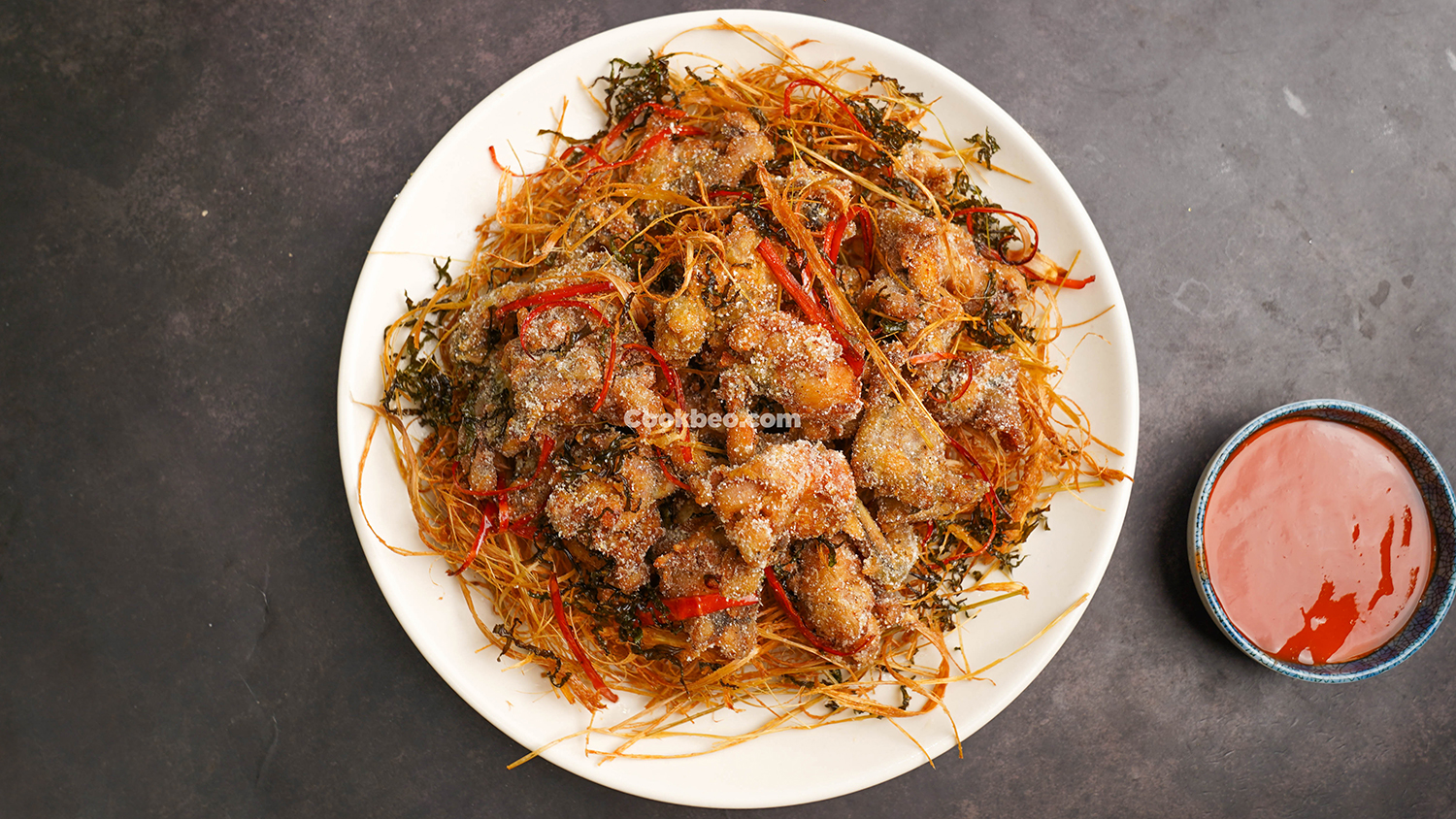
Ingredients
- 1kg frog meat
- Roasted salt powder
- 5 stalks lemongrass
- 1 bunch pandan leaves
- 2 horn chili peppers
- Turmeric powder
- Rock salt, ginger wine
- 1 small piece of ginger
- Unseasoned crispy frying powder
- Lion's powder (if available)
- Seasonings: ground pepper, fish sauce, MSG
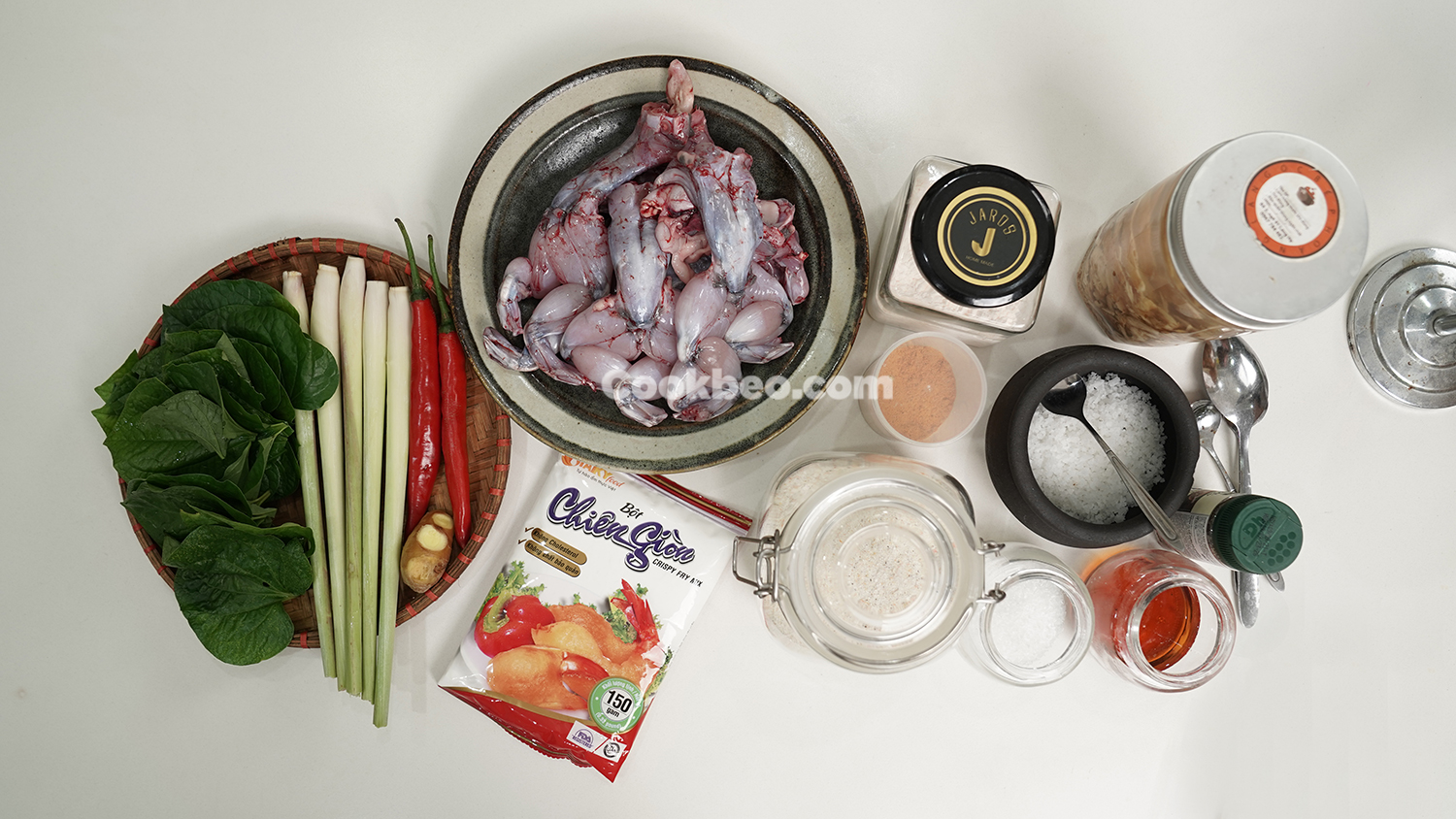
Ingredient Notes
Cookbeo's recipe for roasted salt powder provides a detailed guide on the ingredients, their ratios, and preparation methods. You can refer to it and prepare a jar of roasted salt powder in advance for use in various dishes that require this seasoning, such as salt-roasted chicken, salt-roasted duck, salt-roasted ribs...
Frog meat is currently sold in markets at an average price of around 80,000 VND/kg. Supermarkets also sell pre-prepared frog meat, but Cookbeo personally feels that the flavor is not as fresh and delicious as buying live frogs from the market and then processing them.
Instructions
Preparing Frog Meat
When purchasing frogs, ask the seller to do a basic preparation such as skinning and removing the innards. Once you bring them home, you will need to further clean and eliminate any fishy odors.
Typically, to clean and remove the fishy smell from ingredients like frogs, beef, chicken, or duck, Cookbeo uses rock salt and ginger wine. Crush them thoroughly, then rinse clean and let them drain.
After the frog meat has drained, cut it into bite-sized pieces. Before coating with flour and frying, marinate the frog meat with some seasonings to enhance its flavor.
For about 1kg of frog meat, marinate with 2 teaspoons of fish sauce, ½ teaspoon of MSG, ½ teaspoon of ground pepper, and 1 teaspoon of turmeric powder to remove the fishy smell and to give the frog meat a more appealing color. Additionally, finely grind a small piece of ginger to marinate with the frog meat for added aroma and to aid digestion.

Preparing Other Ingredients
Remove the tough outer layers from the lemongrass, rinse thoroughly, and let it drain. Cut the lemongrass stalks in half, crush them lightly, and tear them into fibers. You can also slice them diagonally if preferred. These lemongrass pieces will be fried until crispy, serving both as a garnish and to enhance the enticing aroma of the salt-roasted frog dish.
After cleaning, deseed the horn chili peppers and slice them into thin strips. Similar to the lemongrass, the chili peppers are used for garnish and to add a spicy kick to the dish.
Soak the pandan leaves in clean saltwater, rinse them, and let them drain before cutting them into small strands. These pandan leaves will also be fried until crispy and pair wonderfully with the salt-roasted frog.
Frying Lemongrass, Chili, and Pandan Leaves
Add cooking oil to a pan and heat it over medium heat until the oil is sufficiently hot. Use enough oil to submerge the frog meat during frying.
First, fry the lemongrass to release its essential oils, which will infuse the frog meat with a rich aroma. To ensure the lemongrass fries until crispy and does not become chewy, lightly coat it with a thin layer of crispy frying powder and press evenly.
Once the oil is hot, add the lemongrass and fry until it becomes crispy and golden brown, then remove and drain excess oil.
Next, add the horn chili peppers to the oil and fry them as well. After frying, remove and drain the excess oil.
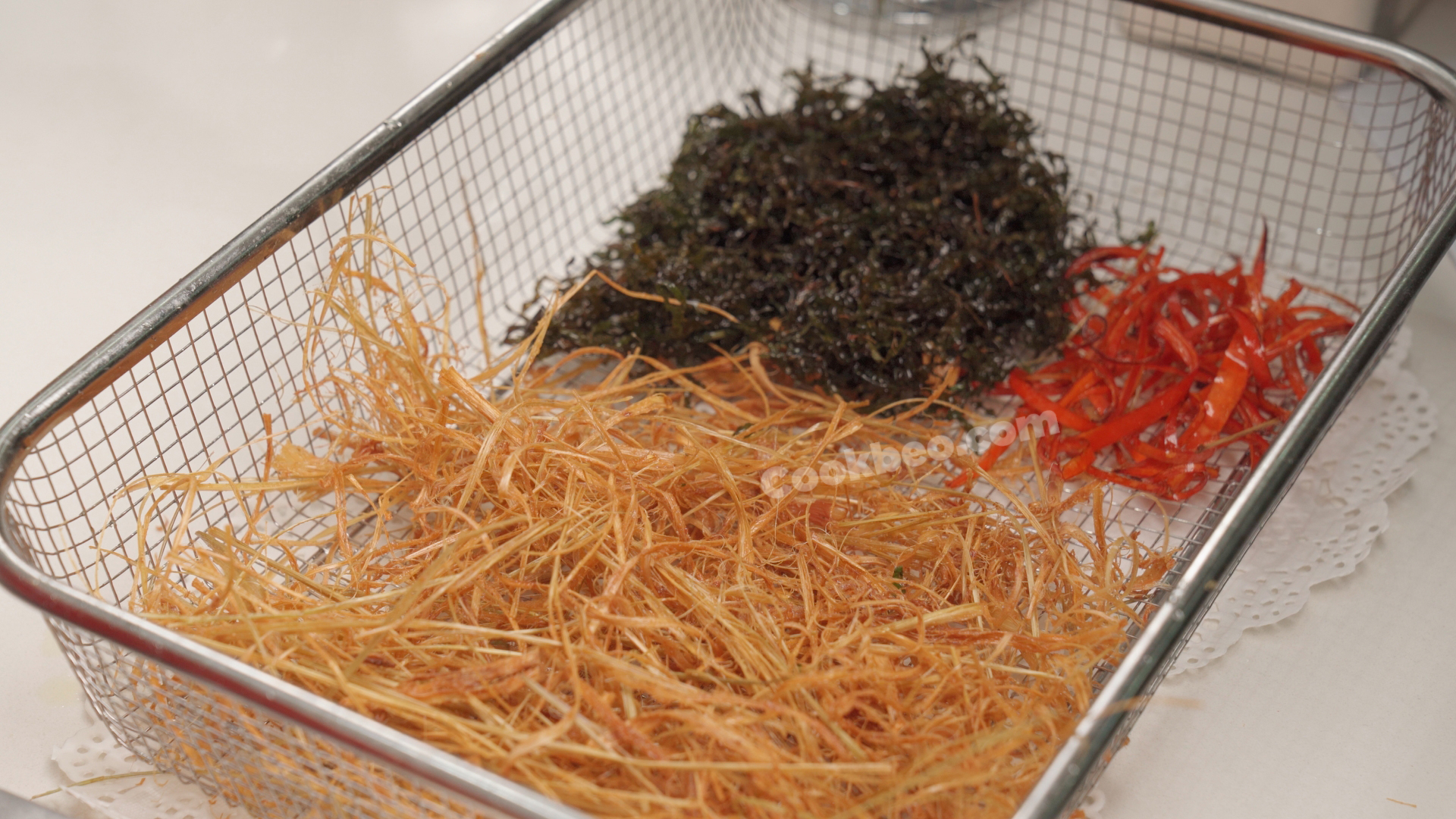
Regarding the pandan leaves, Cookbeo advises that if you are frying a large quantity, it is best to fry them last or fry them separately. Frying too many pandan leaves at once can cause the oil to darken, which may affect the color of the frog meat. If frying a small amount, you can fry them beforehand.
Making Salt-Roasted Frog
Before frying the frog meat, coat it with crispy frying powder to create a crunchy exterior. If you have lion's powder, add a small amount to enhance the aroma and give the frog meat an appealing golden color.
Evenly coat all sides of the frog meat pieces with the flour, gently shake off any excess. When the oil is hot, add the frog meat to fry. To achieve a crispy texture, it is recommended to fry the meat twice. First, fry the frog meat until it is cooked through and turns a light golden color, then remove it from the oil.
Heat the oil again and add the frog meat for the second fry. Fry until the frog meat achieves a deep golden color and the outer layer feels firm when pressed with chopsticks, indicating that it has reached the desired crispiness. Remove and drain excess oil.
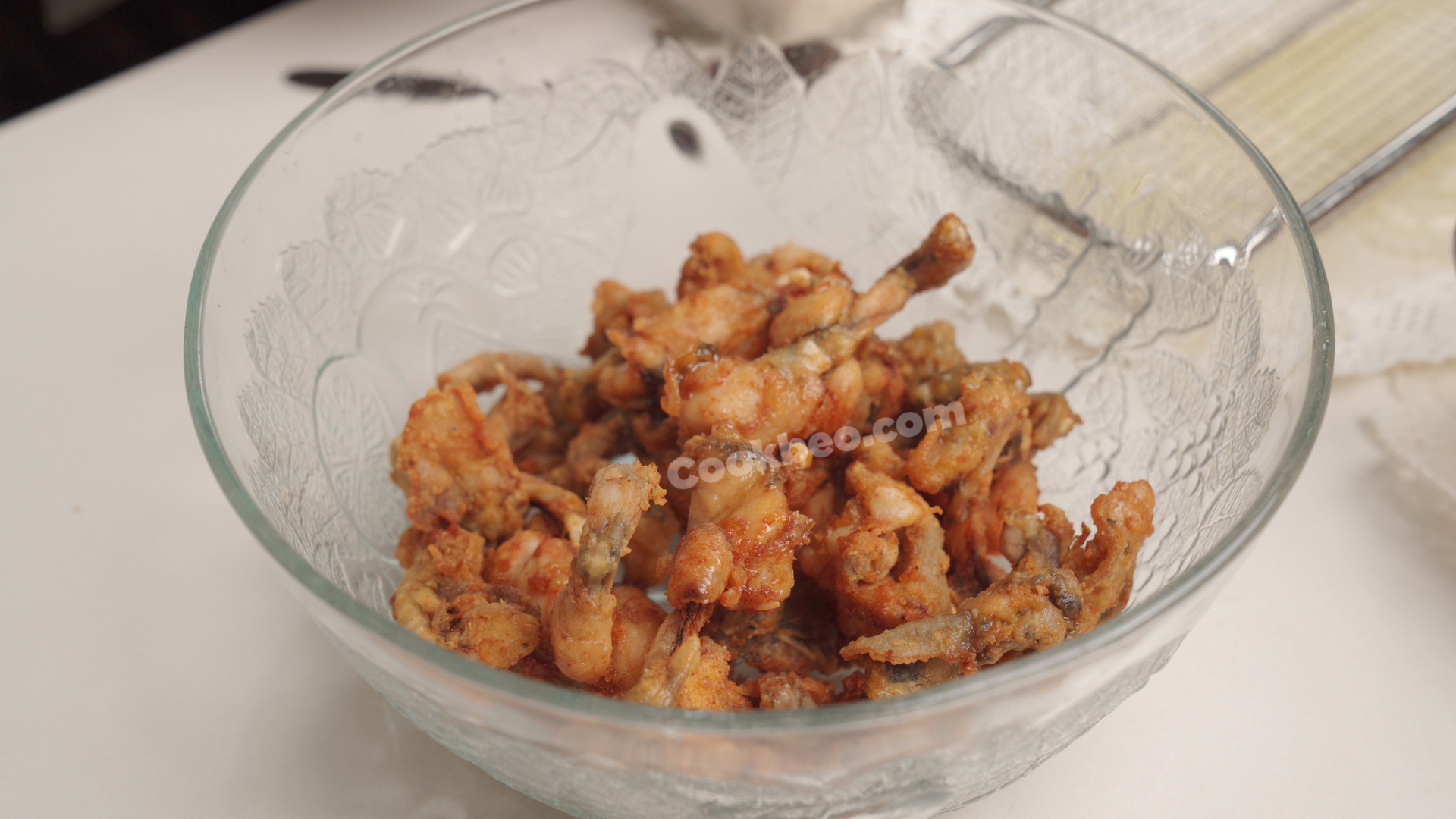
While the fried frog meat is still hot and slightly oily, place it in a bowl and sprinkle 2-3 tablespoons of roasted salt powder over it, tossing to ensure the salt powder evenly coats the frog meat.
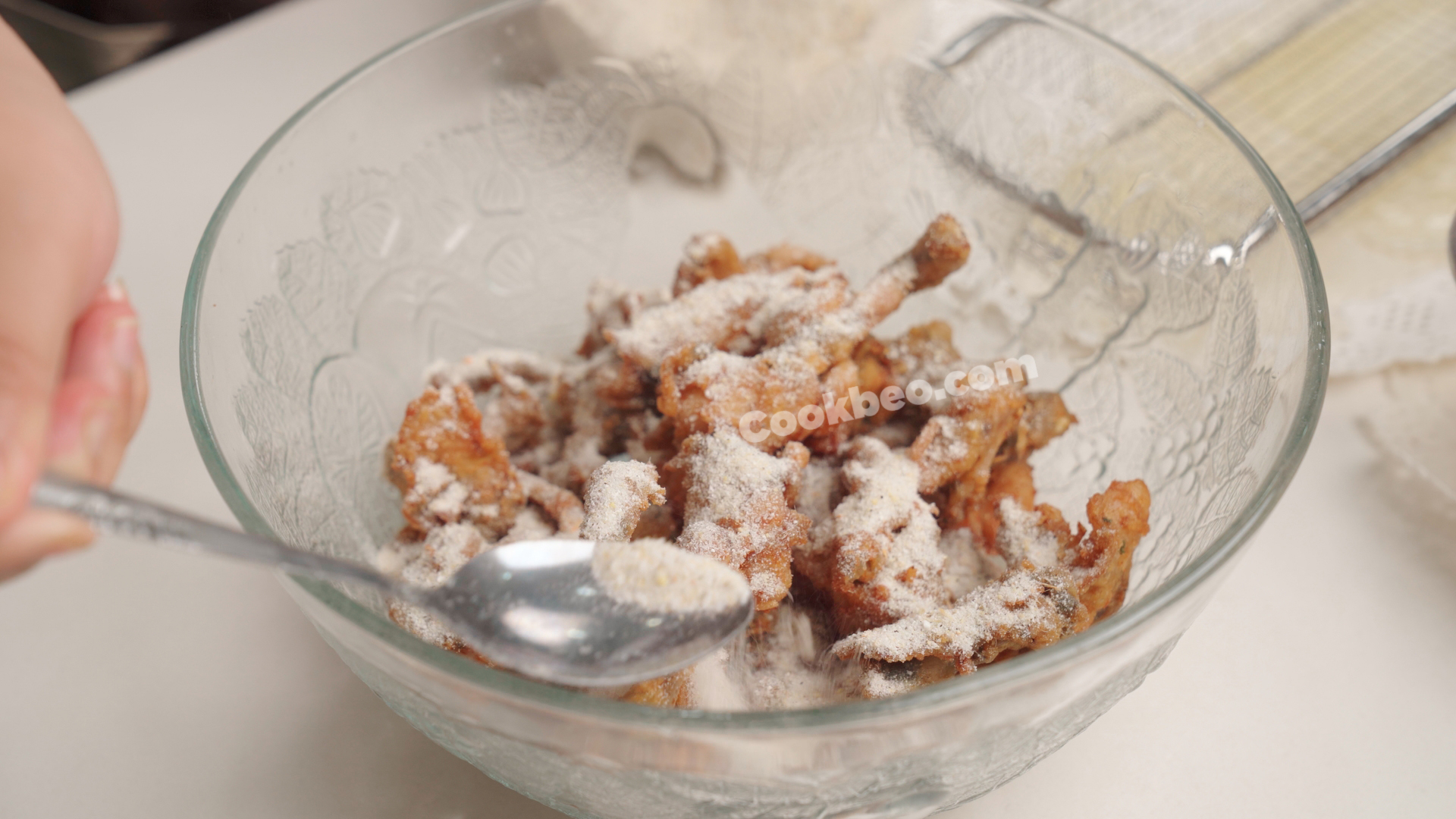
Next, place the fried lemongrass on a plate, then add the salt-roasted frog on top, and finally add the fried pandan leaves and chili peppers. Alternatively, you can mix all the ingredients together and evenly coat them with roasted salt powder.
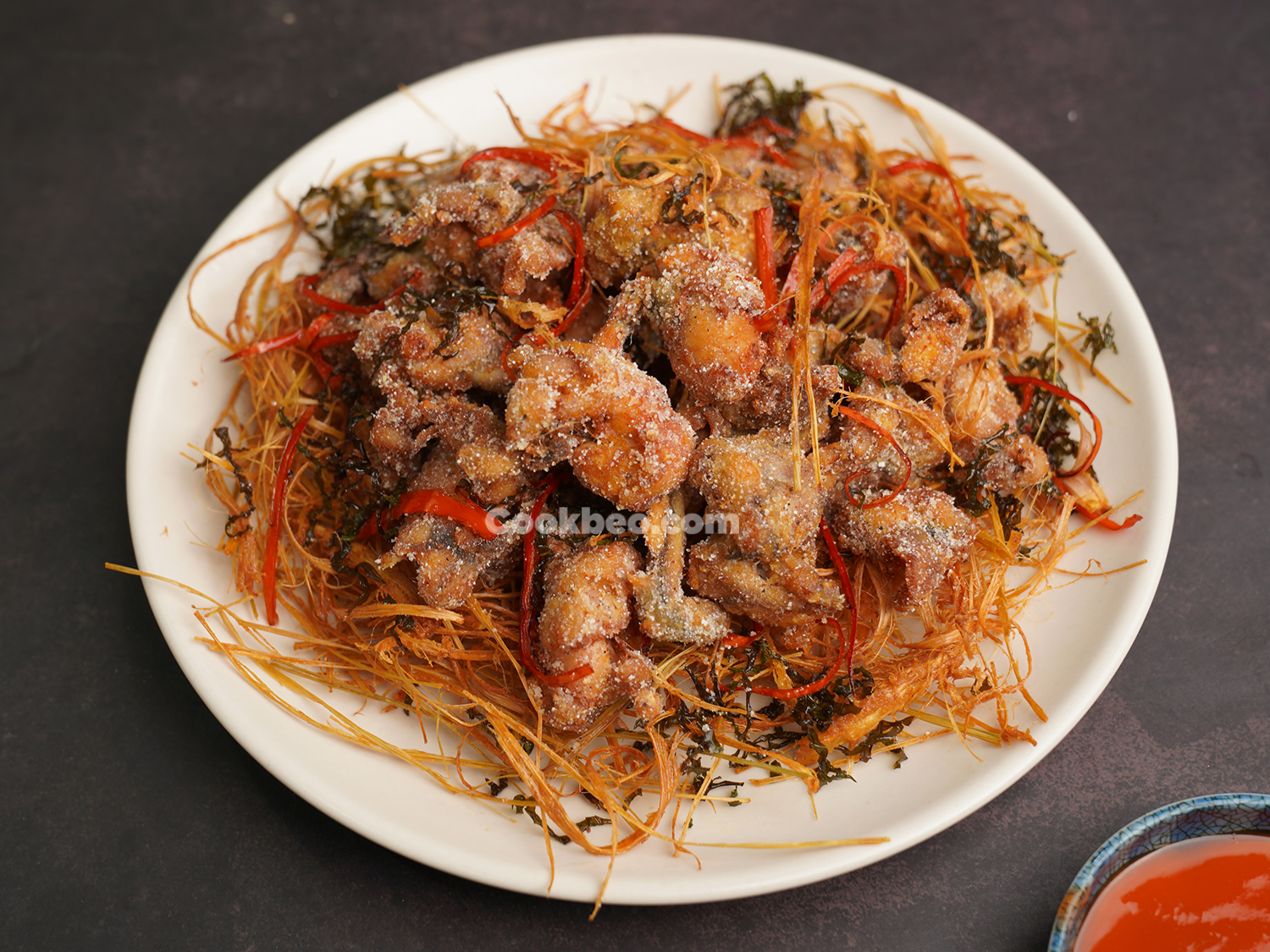
The salt-roasted frog is very aromatic and visually appealing with its vibrant colors. The exterior of the frog meat is crispy, while the interior remains moist and tender, rich in flavor. The roasted salt powder is perfectly seasoned and fragrant. This dish is best enjoyed hot; once cooled, the meat becomes a bit hard and loses its appeal. You can dip it in a mixture of chili sauce with a bit of sugar and lime juice.
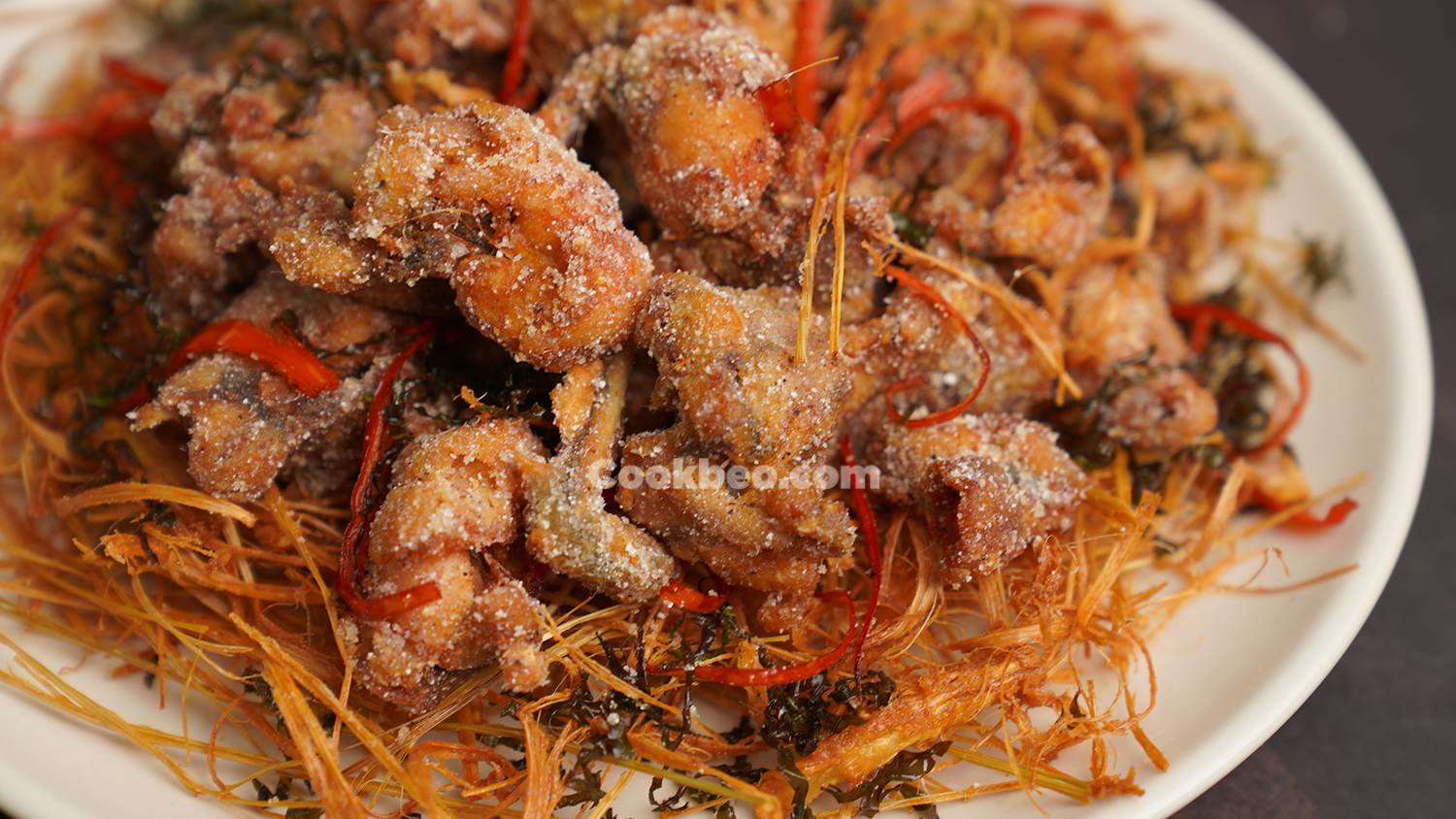
Clearly, making dishes at home, although slightly laborious and time-consuming, allows you to adjust the seasoning to your taste, ensure thorough cleaning and safety, and also save money.
Save this super delicious salt-roasted frog recipe and wish you success in applying the formula that Cookbeo has shared!





